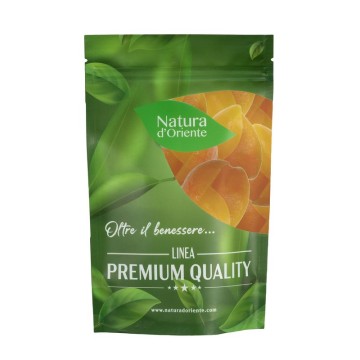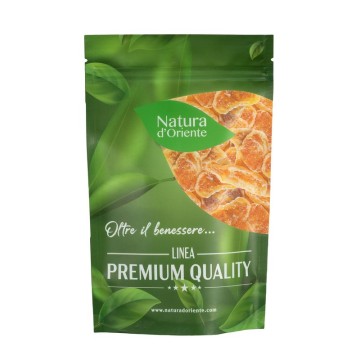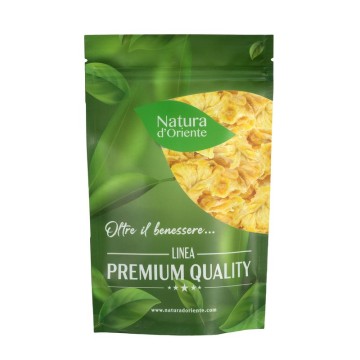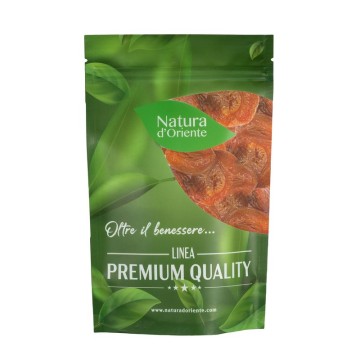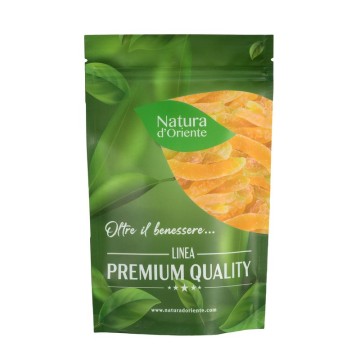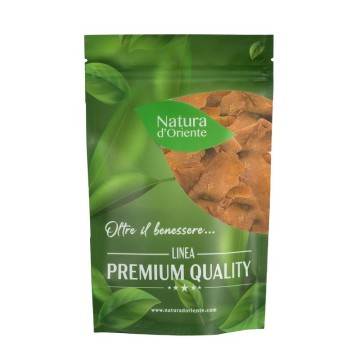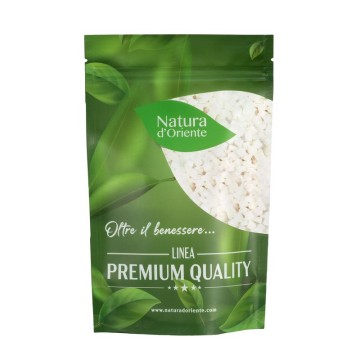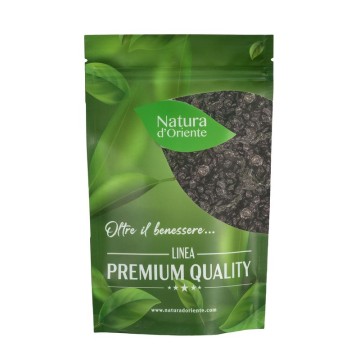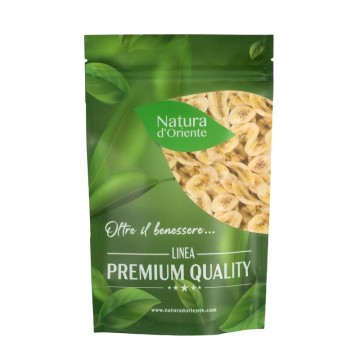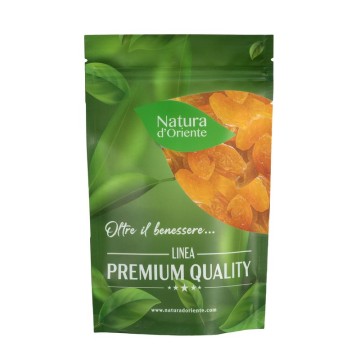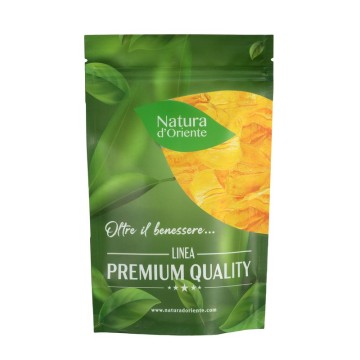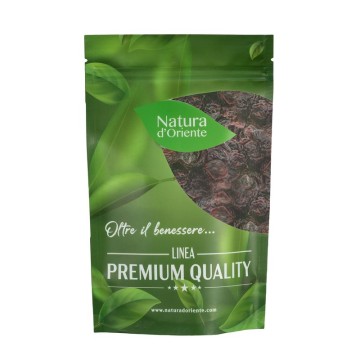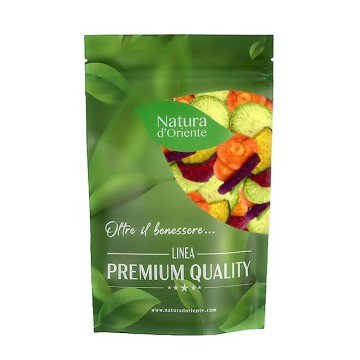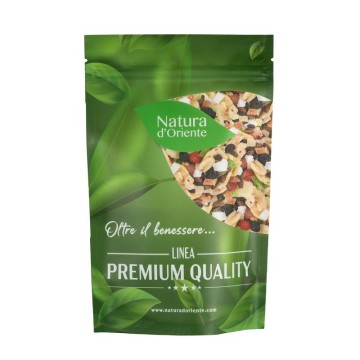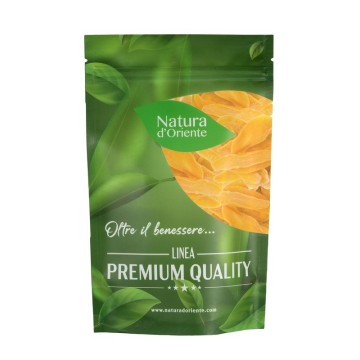Diced dehydrated ginger
The underground part (rhizome) of the ginger plant has been used for centuries in oriental cuisine, and in medicine for the well-being of the human body. This sort of root, in fact, is rich in a unique flavor between sweet and pungent, as well as healthy properties, also available in the dried ginger version.
Dehydrated ginger: properties and benefits
Used for millennia as a spice, ginger root is in great demand both in powder form and in the particular version of dehydrated diced ginger - almost a natural and special candy. It has become a precious flavoring, also known for its beneficial properties on our body.
Already in oriental medicine, ginger was established as a natural anti-inflammatory food, known for stimulating excellent digestive effects, and as an anti-nausea and anti-dizziness substance. Among some peoples, it was also known as aphrodisiac food.
Even today it is widely used in the kitchen, and also appreciated for its healthy characteristics to reduce some symptoms of indigestion, or to enhance the antioxidant effects contained in this food.
The active principles of the plant, in fact, are non-volatile substances, such as gingerols, shogaoli, resins and mucilages . These are substances that contain active ingredients, especially with antioxidant properties.
They help protect cells from damage due to aging, and provide even greater effects than vitamin E - still present in diced ginger or in all its forms.
In addition to providing the spicy flavor, the polyphenols in ginger (gingerols and shogaoli) are an aid to other beneficial treatments.
Among the historically recognized properties of ginger, there is the ability to alleviate sore throats - in the past it was used to treat hoarseness, and against winter colds of the oropharyngeal system (due to cold air in the lungs).
The digestive benefits of ginger are the best known already in ancient China. This food, in fact, protects the gastric mucosa, counteracts the accumulation of toxins and bacterial fermentation during digestion. Improves gastrointestinal motility and stomach muscle tone.
It was used in the past as a natural antiseptic, for its purifying properties, which help the absorption of food, and was used as a calming against stomach pain.
Always as a "purifying" ginger is used against halitosis, to facilitate a fresh and fragrant breath, through a quick intake of the dehydrated cubes.
Its anti-emetic properties, ie to decrease the symptoms of motion sickness such as dizziness, nausea and esophageal reflux, have been known since ancient times. Furthermore, it has historically been known as a beneficial food to alleviate menstrual-related disorders such as pain in the pelvic area and headaches.
The dehydrated ginger, remember that through the drying procedure, it takes on a higher concentration of polyphenols.
Origins and History of cultivation
Born spontaneously in the tropical zone of Asia, this herbaceous plant gives life to the "root" of ginger; it has been used for centuries in oriental cuisine and beyond, for its tasty and healthy properties. In fact, from its rhizome, the underground part, an aromatic spice with a spicy flavor is obtained.
Already in China millennia ago, the writings of Confucius (5th century BC) mention that ginger was used in medicine as a hot element, to fight the cold and rebalance the body.
Ginger was also considered precious by the Greeks and Romans, and the doctor Dioscorides Pedanius (1st century AD) recommended it to calm the stomach. The Arab peoples even appreciated it as an invigorating and aphrodisiac food.
Ginger was also used to preserve food, and for this reason it was attributed prodigious properties (it looked like a miraculous food).
From here, its importance in commercial exchanges was born, which has continued over the centuries. If in the Middle Ages, the ginger plant was known
as "gengevo" (hence the English gingifer and the current ginger), in the sixteenth century it also reached the Americas during colonization.
Today ginger is grown throughout the tropical and subtropical belt of the planet, to sell its rhizome as fresh ginger, or to obtain sun-dried dehydrated ginger, transformed into powder, as a spice.
When dehydrated, ginger can be cut into cubes or cubes, chunks, slices or candied - with the addition of sugar.
Plant and Fruit
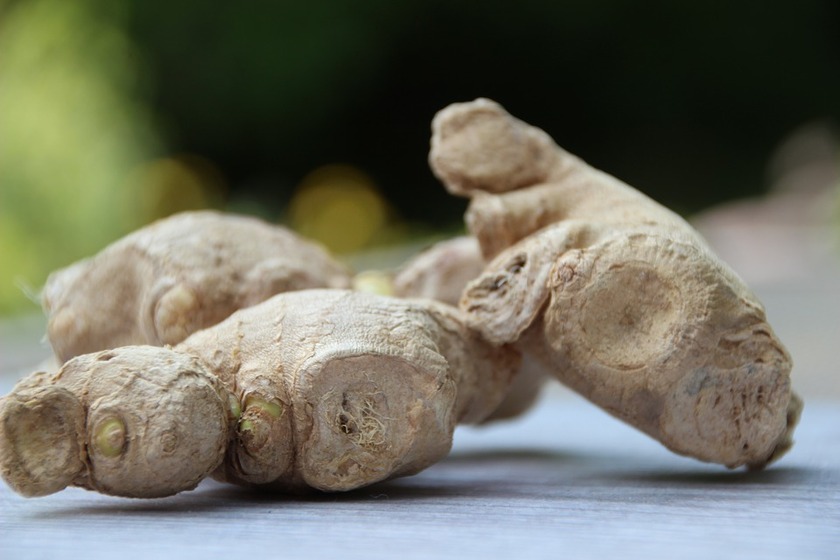 From the perennial herbaceous plant Zingiber officinale, of the Zingiberaceae family, comes the spice we know. Native to the Far East in the tropical area, the plant has a fleshy and branched rhizome (an underground shoot), from which hollow stems formed by leaves are born, and other stems with yellow-green inflorescences.
From the perennial herbaceous plant Zingiber officinale, of the Zingiberaceae family, comes the spice we know. Native to the Far East in the tropical area, the plant has a fleshy and branched rhizome (an underground shoot), from which hollow stems formed by leaves are born, and other stems with yellow-green inflorescences.
Ginger flowers are small and white and its bushes expand, reaching up to half a meter in width and height.
The fruit is woody, and is not used in cooking as is the case with the rhizome.
The ginger plant can be grown indoors or in vegetable gardens, the important thing is that it grows in warm climates, where temperatures do not drop below 5 ° C. < / p>
The rhizome is harvested from the moment the ginger plant has accumulated essential oil, ie during the cold season between January and February.
Nutritional values of diced dehydrated ginger
Dried ginger has a consistent caloric intake, provides 380 Kcal for every 100 grams. It is composed of sugars (75 g), but 0% fat, and about 4% fiber.
Even the dehydrated version makes available the active ingredients contained in the essential oil: zingiberene, polyphenols, gingerols and shogaoli that make the taste sparkling.
Dehydrated ginger contains these highly studied phenolic substances, including 6-gingerol which when dried turns into 6-shogaol.
It has good doses of vitamin E, vitamin B6, potassium, zinc, magnesium, copper and manganese.
How to consume diced dehydrated ginger in the kitchen or as a snack
Due to its pungent taste, this spice is often loved to flavor dishes, but this version in cubes with sugar, makes a contrast between spicy and sweet that makes it appreciated as a break - hungry or unusual candy.
Perfect as a snack, or as a top decoration for muffins, cupcakes, desserts and ice cream, this diced ginger is an energizing snack, as well as a support for those who want to avoid overeating between meals.
It can become an ingredient for the preparation of cakes, biscuits, and other sweets, and can be used to create energy bars for athletes.
Cubed ginger can be easily added to yogurt, smoothies, dried fruit mixes, and some fruit salads.
Dehydrated ginger: side effects and contraindications
There are no particular warnings for the consumption of ginger, but it is necessary to consider a possible intolerance or allergy to the food.
In the intake, it is important not to exceed the doses of sweetened ginger, since it contains glucose levels can raise the glycemic peak for those suffering from diabetes. For this reason, it should be used with caution during pregnancy or breastfeeding.
Since its fluidifying properties have been studied, even if not definitively proven, ginger is not recommended for people who use anticoagulant drugs.

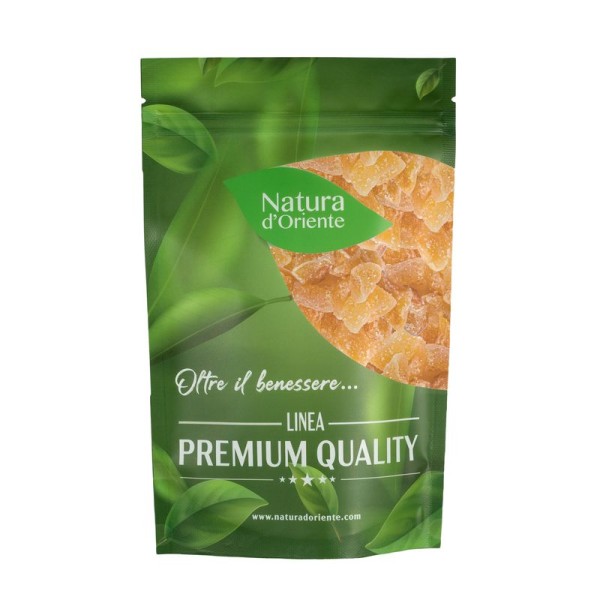







 No reward points for this product.
No reward points for this product.
 From the perennial herbaceous plant Zingiber officinale, of the Zingiberaceae family, comes the spice we know. Native to the Far East in the tropical area, the plant has a fleshy and branched rhizome (an underground shoot), from which hollow stems formed by leaves are born, and other stems with yellow-green inflorescences.
From the perennial herbaceous plant Zingiber officinale, of the Zingiberaceae family, comes the spice we know. Native to the Far East in the tropical area, the plant has a fleshy and branched rhizome (an underground shoot), from which hollow stems formed by leaves are born, and other stems with yellow-green inflorescences.